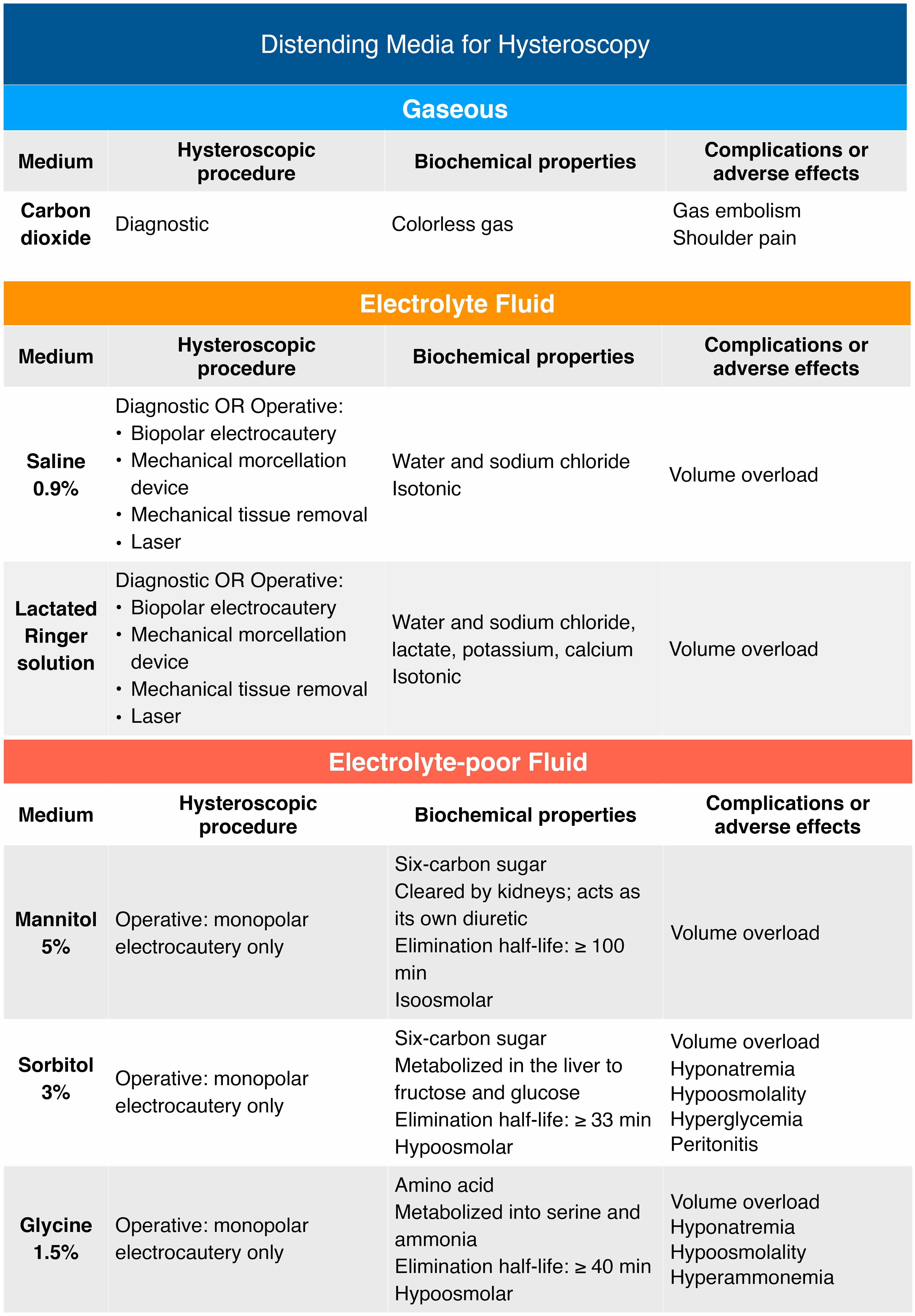A is the correct answer
Explanation:
Hysteroscopy is a commonly performed procedure for the diagnosis and treatment of intrauterine pathology. Understanding the benefits and potential risks of various distending media is critical to a safe and successful gynecologic practice. Fluid distending media are classified according to viscosity, osmolality, and electrolyte content. The use of monopolar electrosurgical instruments requires electrolyte-free media. Excessive absorption of distending media can result in fluid overload, and if nonphysiologic fluids are used, electrolyte disturbances. Healthy individuals may compensate for these imbalances, but individuals with underlying cardiovascular or kidney disease are at risk for serious complications. A solution of 1.5% glycine is an electrolyte-free medium with an osmolarity of 200 mOsm/L. Absorption of excess hypotonic and electrolyte-free medium can cause hyponatremia and pulmonary edema, as observed in this patient.

While 5% mannitol (B) is an electrolyte-free medium, it is nearly isotonic, so it does not cause hyposmolality and hyponatremia. Lactated Ringer solution (C) and normal saline (D) are electrolyte-rich solutions, so they are not suitable for use with monopolar devices. Excess absorption can cause volume overload but does not result in electrolyte imbalance.
P.S. Want to test your knowledge with more questions like this? Take advantage of 20% off the Rosh Review CREOG Qbank and get access to 2,000 CREOG-formatted questions with detailed explanations and images!

